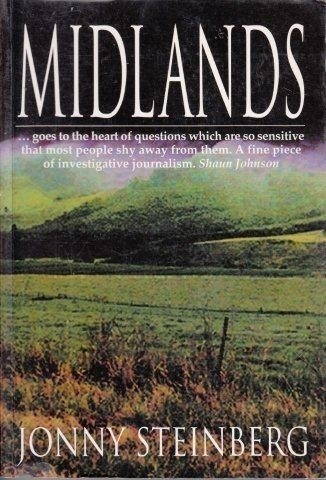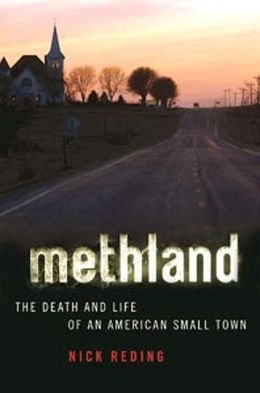Defining International Literary Journalism: Case Studies from South Africa, the U.S., and ChinaWriting for Social ChangeYet it is a mistake to regard an identifiable voice as the most defining characteristic of a piece of literary journalism. Rather, far more important is what that voice says. Taking apart a journalistic piece in this way provides a more abstract quality that sets literary journalism apart from conventional journalism. In the introduction to Global Stories: Literary Journalism, Mustain (2011) defines “conventional journalism” as such: By ‘conventional journalism,’ I also mean the straightforward reporting of news found in many media. In such stories, information is usually presented in descending order of importance. Language must be accessible to a wide audience. The stories are usually not long, and if they are reporting on controversial issues, they should be ‘balanced’ or ‘neutral.’ In many societies, such journalism plays a vital role: Keeping the public informed about important matters. (p. iv) According to Keeble and Tulloch (2012), “the vision” of literary journalism “decisively refutes [this] dominant US model of journalism as a neutral, fact-based, professional activity, eschewing commitment or activism in the disinterested search for truth” (p. 6). Conversely, literary journalism embraces “commitment or activism” and eschews “the disinterested search for the truth.” Moreover, Keeble and Tulloch (2012) maintain that the voice of literary journalism is an idealistic one:The vision here is of a journalism purged of its grosser commercial and industrial aspects, practiced by artists of integrity and passion…This vision draws on the real strengths of the American journalistic tradition. It is wedded to an ideal of Romantic individualism— with the journalist as a courageous actor confronting the forces of the state and corporate power. (p. 5-6) Thus, the techniques described in the previous section of this introduction have an end, common to all works of literary journalism. According to Mustain (2011), literary journalism uses “intelligence and technical prowess to create true stories about humans and our condition…[and] enable[s] us to experience and comprehend life more fully” (p. iv). Bak (2011) also stresses “the influence that immersion reporting has had over the last century on exposing and, ideally, correcting certain social ills” (p. 14). Writing for the sake of creating social change is a significant and constant characteristic of literary journalism. Case Studies: Three Works of International Literary JournalismI employ the definition of literary journalism as explained in this introduction to argue that across cultures, literary journalism succeeds where traditional journalism (defined by Mustain in the previous section) fails to produce social change. In so doing, I examine three contemporary works of literary journalism, each taken from a different tradition of literary journalism, and each addressing a different social problem. These three case studies are Jonny Steinberg’s Midlands: A Very South African Murder (2002), Nick Reding’s Methland: The Death and Life of an American Small Town (2009), and Chen Guidi and Wu Chuntao’s Will the Boat Sink the Water?: The Life of China’s Peasants (2003). While these three works of literary journalism might appear to address vastly different subjects (racial tensions in post-apartheid South Africa, the American methamphetamine epidemic, and the plight of Chinese peasants, respectively) using widely varying methods of storytelling, I contend that they are all instances of the same previously-defined genre of literary journalism and that they therefore deal with similar underlying themes and purposes. In the process, I suggest the importance of examining this genre from a globally comparative perspective, as opposed to within just one culture and through the lens of cultural relativism. Across these examples, traditional journalism has reported on each of the social issues existing in rural and overlooked areas of the country. Yet this traditional, fact-driven reporting has failed to meaningfully bring the public’s attention to these social issues. Literary journalism fills a social void by giving a voice to disenfranchised groups by bringing to light their particular struggles. By using the same literary devices as fiction to attract and entice readers, these examples of literary journalism succeed in bringing marginalized social issues to the mainstream public’s attention, therefore acting in a way which both traditional literature and traditional journalism cannot. These three instances of literary journalism exemplify how the discipline’s technical and literary achievements create a voice for the voiceless. Literary Journalism in South Africa: Exposing Farm Murders and Post-Apartheid Racism in South AfricaLess than two months after the 1994 election ended South Africa’s long history of racial segregation, a white farmer in the rural Free State village was stabbed to death in his garden. In the months that followed, reports of similar occurrences flooded in from the nation’s countryside. By 1997, an average of three to four farmers were assaulted per week — a rate that has remained constant ever since (Steinberg, 2002, p. vii). Yet these “farm murders,” as they are known locally, did not receive much coverage in the mainstream media. Renowned South African writer and author of Midlands: A Very South African Murder, Jonny Steinberg (2002) describes the spotty reportage on the countryside prior to the publication of his book of literary journalism as “fantastical and strange — like a poor imitation of a Marquez story” (p. viii). The countryside, and its problems, remained a mystery to those in urban South Africa — conceived of as “the hinterland” and “inscrutable” (Steinberg, 2002, p. viii). Steinberg (2002) even criticizes his own scattered previous reportage on the subject of farm murders in the 1990s: Farm murders featured occasionally among the stories I covered, and reporting on them was a frustrating business. I wrote the same distilled, formulaic reports everyone else based in the cities did, scratching the surface, understanding nothing. (p. viii) In autumn 1999, Steinberg decided to resign so that he could focus his efforts on this subject. To him “the meaning of this violence has never been clear,” but he sensed the farm murders “occupy a strange and ambiguous space; they tamper with the boundary between acquisitive crime and racial hatred” (Steinberg, 2002, p. vii). He believed in their ability to tell a larger story: Now, the dispatches from farming districts appeared to be telling us something all too real. Perhaps the goodwill of the Mandela period was illusory? Perhaps there were a host of unsettled scores we had brushed under the carpet? Maybe, for once, the countryside was way ahead of us, bringing a grim portent of life after the honeymoon. (Steinberg, 2002, p. viii) Steinberg set out to explore an overlooked story because of his premonition that it could be illustrative of the historical moment. Throughout his telling of this particular farm murder (that of “Peter Mitchell”), Steinberg plays with the boundary between fact and fiction. Steinberg changes the name of the village and of all other places, the name of the murdered man and of all other people, as well as the date of the murder and of other events. He calls this decision “a defeat of sorts,” blaming the concession for the loss of some authority as a journalist (Steinberg, 2002, p. ix-x). But Steinberg uses techniques of literary journalism to regain his authorial authority. In the process, he uses this compelling voice to cast light on the enigmatic countryside, thereby illuminating the deep-seated racism still pervasive throughout post-apartheid South Africa. Steinberg (2002) trusts his role as a literary journalist to use one story to capture the plight of many, and to expose a previously ignored social ill (namely, farm murders and their implications of the underlying racism still present in post-apartheid South Africa): “My purpose was to tell a grander story, one that happened to implicate, and to reach into the life of, a man who had agreed to talk to me” (p. xi). Literary Journalism in the United States: Illuminating Methamphetamine Use and the Decline of Small Town AmericaAmerican journalist Nick Reding, the author of Methland: The Death and Life of an American Small Town, was familiar with the extent of America’s methamphetamine epidemic well before he began to write about it. Reding discovered meth’s far-reaching presence in small-town America by accident in 1999, when he visited Gooding, Idaho for an unrelated reporting assignment (Reding, 2009). Yet despite the drug’s permeation of American society, no one was writing about the pervasive presence of methamphetamine in rural America: When I talked to friends about what I’d seen in Gooding, no one believed it. That, or they dismissed crank as one more unseen, unfathomable aspect of life in The Middle: as prevalent as corn, as inscrutable as the farm bill, and as tacky as evangelical theology. (Reding, 2009, p. 7) Although “local consciousness of the drug was invariably acute,…meth somehow avoided coherent, national scrutiny” (Reding, 2009, p. 7). The drug was everywhere, but it remained “as easy to discount as it was to discover” (Reding, 2009, p. 7). However, in 2005, media coverage of the meth epidemic picked up: “Overnight, the American small town and methamphetamine became synonymous” (Reding, 2009, p. 6). This allowed Reding to secure a contract to write his book on the problem of meth in Oelwein, Iowa, under the premise that “meth was a large-scale true-crime story” (Reding, 2009, p. 11). Yet Reding (2009) hoped to prove that meth was more than just a crime story: “[I] began to change my thinking about meth as a crime story to one that has much more pervasive and far-reaching implications” (p. 11). He sought to break down the American public’s preconceived notions and, in doing so, to expose the new lifestyle of rural America — an area of the country which he saw as “part of, and yet seemingly estranged from, the rest of the country” (Reding, 2009, p. 1-2). By examining the nation’s uncharted countryside, Reding aspired to say something about America as a whole. In his introduction to Methland, Reding (2009) promises: Yet much of what there is to know about the United States at the beginning of the new millennium is on display right there…In their anonymity, and perhaps now more than ever, towns like Oelwein go a long way toward telling us who we are and how we fit into the world. (p. 2) In using the investigative nature of literary journalism to tell the story of one town, Reding (2009) implicates the rest of America and even the world in this epidemic: Eventually, the story I’d once viewed through the lens of homespun crime became one that stretched from the Czech Republic to China to Washington, D.C., and involved not just addicts and prosecutors and public defenders, but also congresspeople and governors and U.N. officials; neuropharmacologists and macroeconomists; rural sociologists and microbiologists; and drug lobbyists and pharmaceutical company executives. (p. 18) Ultimately, Reding (2009) finds that his story has much broader consequences than he originally anticipated: “What it took three and a half years to fully understand (nine if I count back to my trip to Gooding, Idaho) is that the real story is as much about the death of a way of life as it is about the birth of a drug” (p. 18). Although Reding uses literary journalism to take an in-depth look at only a handful of characters in one American town, he is still able to implicate the entire country, and even the entire world, in the issue.Continued on Next Page » Suggested Reading from Inquiries Journal
Inquiries Journal provides undergraduate and graduate students around the world a platform for the wide dissemination of academic work over a range of core disciplines. Representing the work of students from hundreds of institutions around the globe, Inquiries Journal's large database of academic articles is completely free. Learn more | Blog | Submit Latest in Business & Communications |


















